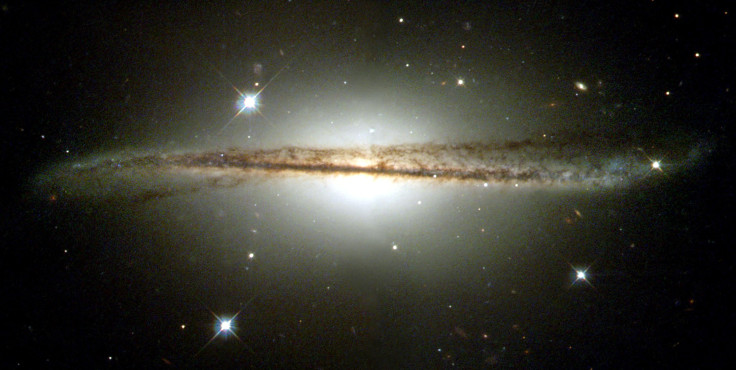'Star Shrapnel': This Star Is Being 'Slingshotted' Out Of Our Galaxy
KEY POINTS
- Researchers took a closer look at a star 2,000 light-years away
- It's not only moving fast but is also rotating as it hurtles out of the Milky Way
- It's likely the remnant of a star that went supernova, researchers said
Researchers have shed light on an odd star that's essentially being "slingshotted" out of our galaxy after a supernova blast.
In a recent study published in The Astrophysical Journal, a team of researchers had a closer look at a star some 2,000 light-years away that seems to be on its way to leaving our galaxy. Called LP 40-365, the star is hurtling out of the Milky Way at staggering speeds.
"This star is moving so fast that it's almost certainly leaving the galaxy … [it's] moving almost two million miles an hour," study co-author, J.J. Hermes of Boston University (BU), said in the university news release.
The reason why it seems to be in such a hurry to leave the galaxy is that LP 40-365 is essentially a "shrapnel" from a previous supernova explosion, BU explained. Supernovas are the biggest explosions that humans have ever seen, and this particular star survived the cosmic event. As a result, it is being "slingshotted from the explosion," study second author, Odelia Putterman, noted as per the new release.
In their study, the researchers looked at data from the Hubble Space Telescope and the Transiting Exoplanet Survey and found an 8.914-hour variability in both ultraviolet and optical light curves. It's possible that something on its surface is rotating "in and out of view" during this time, Hermes explained. Therefore, it's not only being hurled out of the galaxy but also rotating in the process.
But this particular rotation seems rather slow for a star that survived a supernova blast. Basically, supernovas happen when a white dwarf star gets too big and eventually explodes, BU explained. In binary star systems, wherein two stars are in a pair, a white dwarf may go supernova if its companion star gives it too much mass.
Based on the slowness of LP 40-365's rotation, the researchers believe it's not the companion star that was blasted away but is a "shrapnel" from the very star that went supernova after receiving so much mass from its companion.
"[T]he survivor LP 40 − 365 was not the donor star but was most likely the bound remnant of a mostly disrupted white dwarf that underwent advanced burning from an underluminous (Type Iax) supernova," the researchers wrote.
"This [paper] adds one more layer of knowledge into what role these stars played when the supernova occurred," Putterman said, adding: "By understanding what's happening with this particular star, we can start to understand what's happening with many other similar stars that came from a similar situation."
In 2020, for instance, another team of researchers also reported a star that had blasted itself out of orbit with another star because of a "partial supernova." NASA's Chandra X-Ray Telescope also captured an image of the remnants of a star that had gone supernova, showing its companion that survived the blast.

© Copyright IBTimes 2024. All rights reserved.












